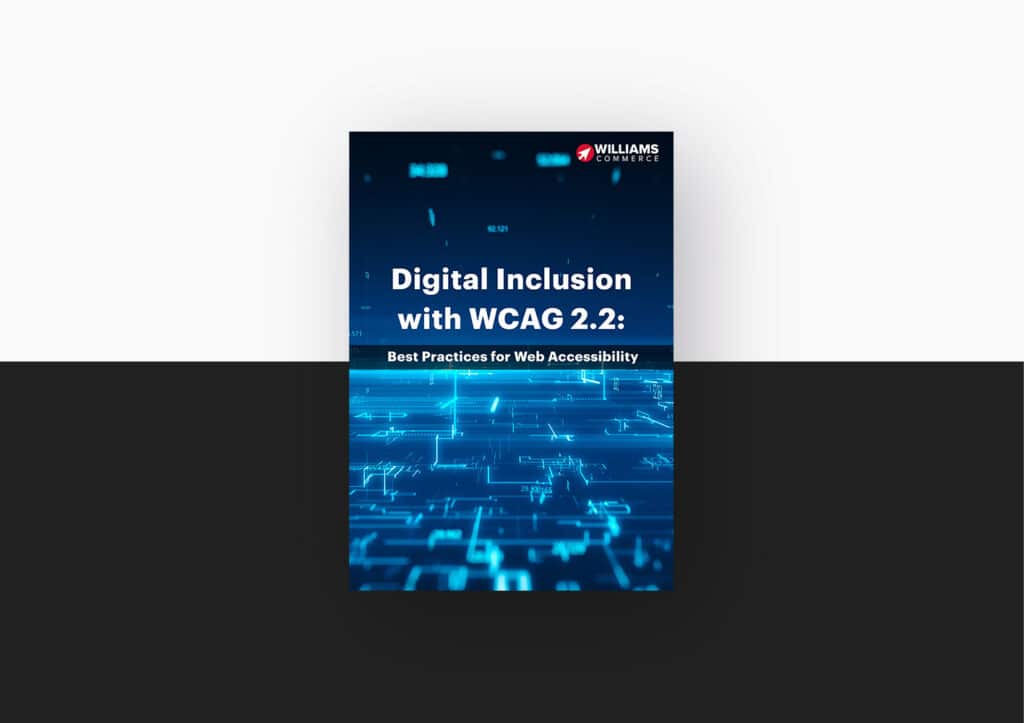From artists to students, ChatGPT has raised important questions about information, content and authenticity since its launch in November 2022. The Williams Commerce team took some time out for a ChatGPT Power Session to review the potential benefits and challenges.
What is ChatGPT?
ChatGPT is a chatbot created by OpenAI to interact with us conversationally. You start a dialogue and ask follow-up questions, challenge statements, and reject unwanted responses. As you work through the process, the chatbot learns and improves.
The original ChatGPT Version 3.5 was free to test until May 2023 and you can still use a basic version without charge. Apps are now available for iOS and Android devices. ChatGPT Plus makes Version 4 available for a monthly subscription with new features and improved availability and response times. You can upload multiple files of your own and ask ChatGPT to analyse the content.
Based on user feedback ChatGPT updates include prompts on how to start a conversation and suggestions to help you continue. To give you more control an option to customise instructions and preferences is one of the latest enhancements for ChatGPT Plus. Internet browsing using Bing is now an option for Plus mobile users to answer questions about recent events. Some approved plugins are also available for things like shopping, travel and translations.
How does ChatGPT work?
OpenAI created a neural network using artificial intelligence (AI) and a Large Language Model (LLM). It can explore huge amounts of data to generate responses to questions in a conversational style.
The original model used diverse internet content from books to social media and was refined by human ‘trainers’. However, OpenAI acknowledges that it has limited knowledge of events after 2021 and that it can make mistakes.
Exploring ChatGPT
There’s a lot of debate about AI what you can and should do with it, so it’s interesting to explore the possibilities. Like most users, we started exploring ChatGPT by experimenting with different types of content. This included taking a closer look at Version 4 to see how we might take advantage of the technology.
Useful applications might include:
- summarising long text such as transcripts, articles or reports
- exploring new ideas, outlines or concepts
- identifying key insights and take-away messages from text
- writing draft text for almost any purpose
- coding scripts and small programs
- extracting data and patterns from complex material
- reformatting complex material.
If you would like to explore too, an easy place to start is with an existing blog or web page. You can simply ask ChatGPT to write a piece to the same brief and compare the results. One interesting point of comparison is the key words included in the new content.
Perfecting prompts
To start you can ask ChatGPT for ideas or create a ‘mega prompt’ of up to 4,000 characters. However, it’s best to keep prompts concise and refine responses with further questions or instructions. You can also ask for a visual interpretation of data. For example, you could ask for a graph showing a breakdown of branded and non-branded keywords from a report. You could then ask for a strategy to optimise performance for non-branded keywords.
Some experimentation will help you find the best prompts to achieve the results you’re looking for. To improve your responses, you can give critical feedback. You can even ask what information you should provide to help the chatbot to give you a better answer.
However, you’ll also need to check your replies to confirm that they are meaningful and accurate. We treat this in the same way as checking a draft created by a colleague. It’s good practice to make sure your content is factual and useful and meets your company guidelines. It’s also important to think about any copyright issues.
Improving ChatGPT content
To improve your content, you can provide prompts based on roles such as a teacher or critic, or on tasks or formats. You can also test long-form requests or chains of prompts. Defining specific audiences and your preferred tone of voice will change the style of your response. Learning how to use prompts effectively and consistently is a skill most of us have yet to develop.
One appealing use of ChatGPT is to summarise, analyse and extract key points from uploaded documents. Once the basic analysis is complete, you can ask for additional refinements which will also improve responses in future conversations. So, for example, you could generate the foundations of a search engine optimisation (SEO) strategy from a standard keyword report.
You can write and refine all sorts of text including blogs, articles, press releases, emails or social media posts. However, for content needing embedded links this step is still manual. There’s an additional code interpreter (CI) plug-in module for the Python programming language. This allows you to work directly with data files, including images and videos.
ChatGPT and confidentiality
The data you upload to ChatGPT could be highly confidential in a competitive environment. ChatGPT saves all conversations as part of its learning process to improve future responses. You can review your previous conversations and so can the chatbot.
Even if you delete your conversation, OpenAI might already have extracted your data. It’s possible human trainers for ChatGPT might see your data, which is stored as long as your account is open.
Since April you have been able to turn off your chat history in your settings. If you do this your data isn’t used for training the ChatGPT model. However, you won’t see the chat in your sidebar and it’s stored for only 30 days.
A new ChatGPT Business subscription is under development to provide more control over data and to help manage end users.
A new option in settings is also planned to help export your ChatGPT data and understand what information is stored. You and then receive files with your conversations, along with other relevant data sent via email.
Conclusion
Alongside the excitement and interest caused by this new tool there are some questions and concerns. Learning how to make the best use of its potential will take some time.
Overall, ChatGPT can save time by collecting information and providing a starting point for reports, content and coding. However, just like the model itself, human input is still needed. Until data and privacy questions are fully answered it’s best not to upload business critical and confidential information.
The team is excited about how ChatGPT and AI can improve the quality of data analysis and content creation. If you would like to know more please get in touch.



